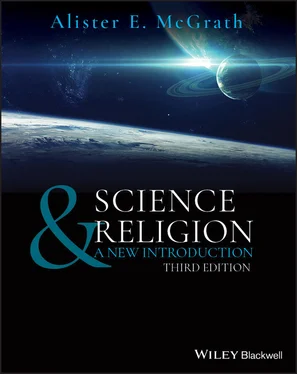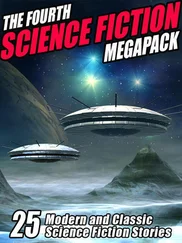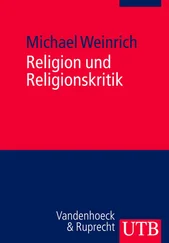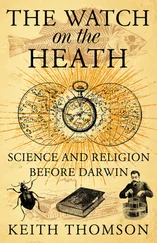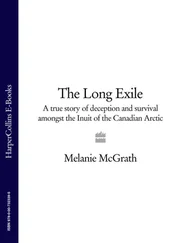1 Cover
2 Preface to the Third Edition Preface to the Third Edition The study of science and religion brings together two of the most significant – and different – forces in human culture. The remarkable surge in books and television documentaries dealing with God and physics, spirituality and science, and the great mysteries of human nature and destiny are a clear sign of the growing interest in this area. Many colleges, seminaries, and universities now offer courses dealing with the field of science and religion, which often attract large and appreciative audiences. This book introduces this field, offering a window into some of its more interesting themes and debates. Based on lectures given to students at Oxford University over the period 2014–2019, this book aims to be accessible and engaging, encouraging its readers to take its themes further. It sets out to introduce this fascinating field on the assumption that its readers have no detailed knowledge about either the natural sciences or theology. The main themes and issues in the study of religion and the natural sciences are carefully explored and explained without making unrealistic assumptions about what its readers are likely to know already. My own interest in the field of science and religion goes back to the early 1970s. I began my studies at Oxford University by studying Chemistry, specializing in quantum theory, before going on to gain an Oxford doctorate in molecular biophysics. After this, I studied theology at Oxford and Cambridge, focusing particularly on the historical interaction of science and religion, particularly during the sixteenth and nineteenth centuries. It is my hope that my own experience of relating the two areas of study may be of value to others seeking to do the same. This book represents a major revision of the first and second editions of this work, responding to feedback from many readers. This revision is reflected in changes that have been made to both its structure and contents, aiming to make the book useful and helpful in engaging questions that are seen as both important and representative within the field. Both the author and publisher will be delighted to receive further comments and criticism, which will be helpful to them in developing future editions of this work. Alister E. McGrath Oxford University September 2019
3 Chapter 1: Science and Religion Chapter 1 Science and Religion: Exploring a Relationship Religion and science are two of the most significant and interesting cultural and intellectual forces in today's world. The field of science and religion, which this book aims to introduce, sets out to explore what these two conversation partners might learn from each other, and where they diverge. Many leading thinkers at the time of the Renaissance used the metaphor of the ‘God's Two Books’ as a way of visualizing this process of allowing both science and religious faith to illuminate reality. It was, many believed, both possible and important to read the ‘Book of Nature’ and the ‘Book of Scripture’ side by side and allow them to inform and enrich each other. Although the invention of the idea of a permanent warfare between science and religion in the late nineteenth century caused many to question this approach, the scholarly discrediting of this ‘warfare’ metanarrative, which was essentially complete by the opening of the twenty‐first century, has given rise to new interest in finding ways of reclaiming and reformulating this dialogue. As Albert Einstein famously remarked: ‘Science without religion is lame, religion without science is blind.’
Why Study Science and Religion? The Chessboard: The Diversity of Science and Religion Ian Barbour's Four Models of the Relation of Science and Religion Four Ways of Imagining the Relation of Science and Religion For Further Reading Works on the Legacy of Ian Barbour
4 Chapter 2: Getting Started Why Study History? The Emergence of the Medieval Synthesis Copernicus, Galileo, and the Solar System Newton, the Mechanical Universe, and Deism Darwin and the Biological Origins of Humanity The ‘Big Bang’: New Insights into the Origins of the Universe For Further Reading
5 Chapter 3: Religion and the Philosophy of Science Fact and Fiction: Realism and Instrumentalism Explanation, Ontology, and Epistemology: Research Methods and the Investigation of Reality Verification: Logical Positivism Falsification: Karl Popper Theory Change in Science: Thomas S. Kuhn For Further Reading
6 Chapter 4: Science and the Philosophy of Religion Science, Religion, and Proofs for God's Existence Traditional Philosophical Arguments for the Existence of God The Ambiguity of ‘Proof’: Justification in Science and Theology God's Action in the World Miracles and the Laws of Nature Natural Atheology? Evolutionary Debunking Arguments against God Natural Theology: Is God the ‘Best Explanation’ of our Universe? A Metaquestion: Creation and the Uniformity of Nature For Further Reading
7 Chapter 5: Models and Analogies in Science and Religion The Use of Models in the Natural Sciences The Kinetic Model of Gases Complementarity: Light as Wave and Particle Analogical Reasoning: Galileo and the Mountains of the Moon Using Scientific Models Critically: Darwin's Principle of Natural Selection The Use of Models and Metaphors in Christian Theology Models and Mystery: The Limits of Representation of Reality Ian Barbour on Models in Science and Religion For Further Reading
8 Chapter 6: Science and Religion Moral Philosophy: Can the Natural Sciences establish Moral Values? Philosophy of Science: Is Reality Limited to What the Sciences Can Disclose? Philosophy of Religion: Theodicy in a Darwinian World Theology: Transhumanism, the ‘Image of God’, and Human Identity Mathematics: Science and the Language of God Physics: Does the ‘Anthropic Principle’ have Religious Significance? Evolutionary Biology: Can we speak of ‘Design’ in Nature? The Psychology of Religion: What is Religion All About? The Cognitive Science of Religion: Is Religion ‘Natural’? Conclusion For Further Reading
9 Sources of CitationsChapter 1 Chapter 2 Chapter 3 Chapter 4 Chapter 5 Chapter 6
10 Index
11 End User License Agreement
1 Cover
2 Table of Contents
3 Begin Reading
1 iii
2 iv
3 ix
4 x
5 1
6 2
7 3
8 4
9 5
10 6
11 7
12 8
13 9
14 10
15 11
16 12
17 13
18 14
19 15
20 16
21 17
22 18
23 19
24 20
25 21
26 22
27 23
28 24
29 25
30 26
31 27
32 28
33 29
34 30
35 31
36 32
37 33
38 34
39 35
40 36
41 37
42 38
43 39
44 40
45 41
46 42
47 43
48 44
49 45
50 46
51 47
52 48
53 49
54 50
55 51
56 52
57 53
58 54
59 55
60 56
61 57
62 58
63 59
64 60
65 61
66 62
67 63
68 64
69 65
70 66
71 67
72 68
73 69
74 70
75 71
76 72
77 73
78 74
79 75
80 76
81 77
82 78
83 79
84 80
85 81
86 82
87 83
88 84
89 85
90 86
91 87
92 88
93 89
94 90
95 91
96 92
97 93
98 94
99 95
100 96
101 97
102 98
103 99
104 100
105 101
106 102
107 103
108 104
109 105
110 106
111 107
112 108
113 109
114 110
115 111
116 112
117 113
118 114
119 115
Читать дальше
